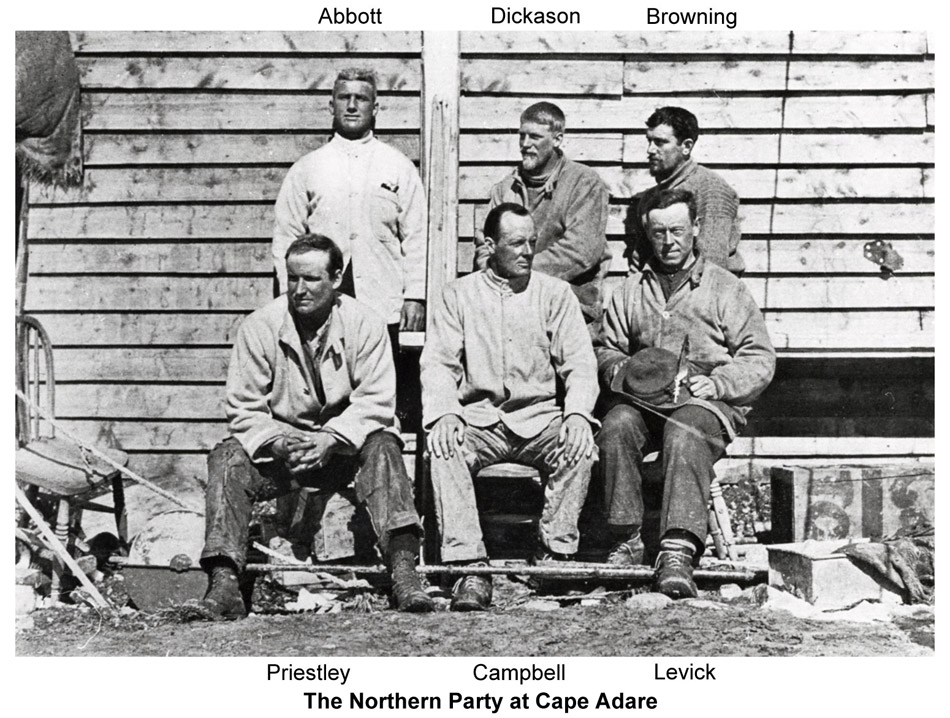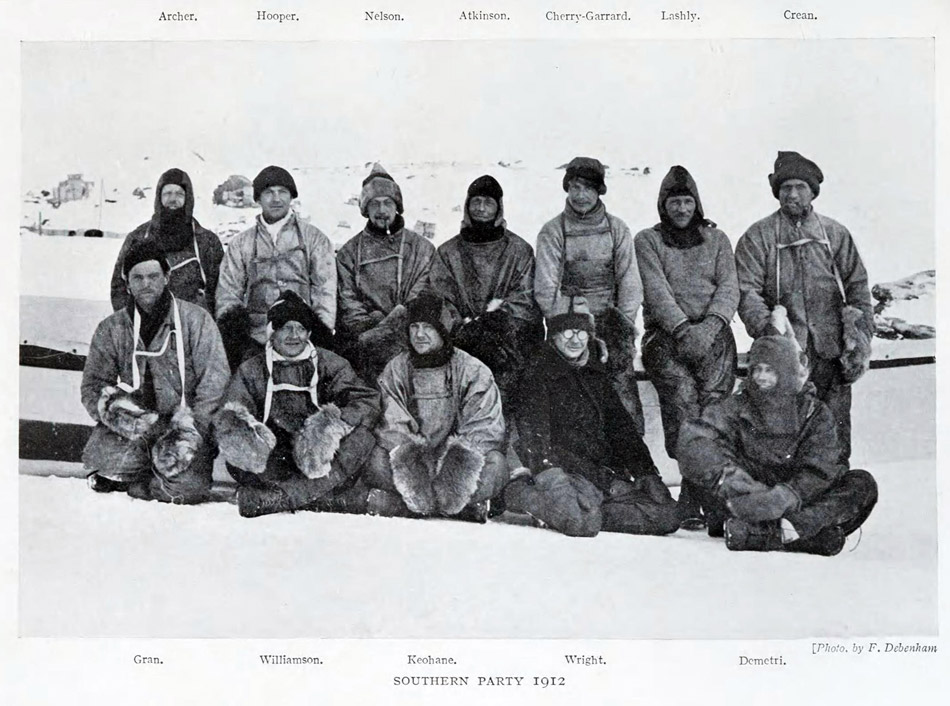British Antarctic Expedition 1910-1913
Captain
Scott, The Terra Nova
Terra Nova Expedition: The pole - p.1 - Preparations | The pole p.2 - Journey | The wider Terra Nova expedition | Time-line and info graphic | Crew of the Terra Nova | What went wrong for Scott to die? | What did Scott's team die of? | Race to the pole Amundsen and Scott | The Northern Party
As well as the longer journeys with multiple members, there were many smaller, shorter trips taken. Constant scientific readings, measurements, observations and experiments were carried out by the men of the expedition when they were not occupied in any of the longer journeys.
The Western Party - 2 separate journeys, 7 months apart
1st journey: 27th Jan 1911 - 13th
April 1911
11 weeks
2nd journey: 18th Nov 1911 - 14th Feb 1912
intended 9 weeks
actual 13 weeks
Thomas Griffith Taylor, Frank Debenham, Charles Wright,
Edgar Evans
Thomas Griffith Taylor, Frank Debenham, Robert Forde, Tryggve Gran
Exploration of the Dry Valleys area first discovered by Scott on the 1901-04 Discovery expedition.
Investigation of coastal glaciers and inland along valleys.
Both: Expert geological and scientific survey expeditions investigating little known or never visited regions on the mainland within range of the main base on Ross Island.
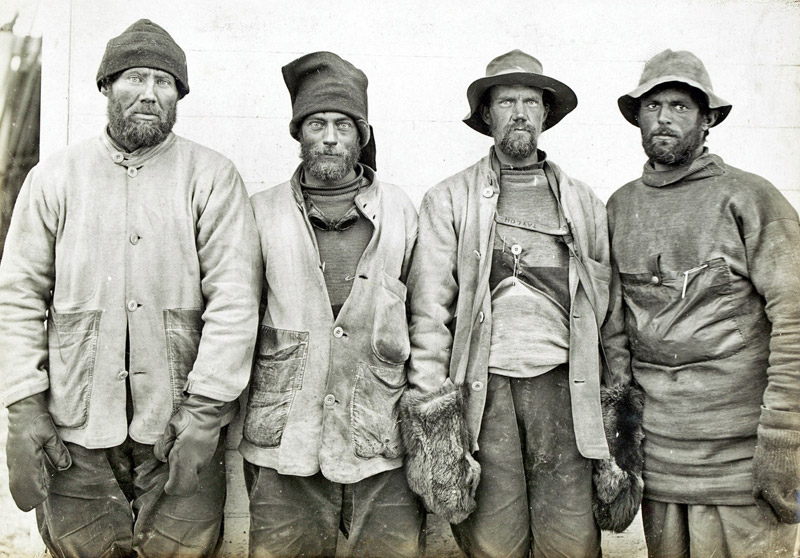
Western
party just after being rescued by the ship
l
to r Forde, Debenham, Taylor, Gran - Feb 15th 1912.
Led by Thomas Griffith Taylor, the leader of the geological team, these two small self-contained expeditions manhauled sledges with tents and supplies to last a few months. The first was dropped off at Butter Point on the mainland by the Terra Nova. This went according to plan in "Dry Valley" (later named Taylor Valley, found to be one of several dry valleys) and on the Ferrar and Koettlitz Glaciers. The four members walked back across the sea ice from the mainland to Cape Evans.
Only two of the original four men went on the second trip, Charles Wright and Edgar Evans had set off with Scott to help haul supplies to the South Pole. One of their replacements was Tryggve Gran a Norwegian who had requested of Scott that he not be part of the attempt on the pole as his fellow countryman Amundsen was also trying to achieve the same goal, as a Norwegian on a British expedition he found himself conflicted about the issue and so gave his efforts elsewhere. Griffith Taylor had been loaned to the expedition for one year by the Australian Government and had to return that summer, meaning he could not accompany the Southern Party. All was well until the 15th of January 1912 when pick-up by the ship didn't happen as planned due to sea-ice, they waited until the 5th of February but with no sign of the ship, began to walk back to Cape Evans, they were spotted by the ship and picked up on the sea-ice on the 18th of February. Caches of collected geological specimens from both trips were collected in January 1913 by the Terra Nova as it left Antarctica for the last time.
The Northern Party (originally intended to the eastern party)
27th Jan 1911 -
5th Nov 1912
intended 55 weeks
actual 93 weeks
George Abbott
Frank Browning
Victor Campbell
Harry Dickason
George Levick
Raymond Priestley
Unable to reach and survey King Edward VII's land (east of the main base) due to sea-ice, Cape Adare was chosen instead (north of the main base), winter was spent in a hut, a full scientific programme with inland travel was planned.
Unable to travel out from Cape Adare as hoped, the party were moved 250 miles which led to an unplanned 2nd winter in an ice cave with little food or equipment when the ship couldn't reach them. Self rescued after a 200 mile walk.
Originally intended to be the "Eastern Party", the Terra Nova sailed eastwards along the front of the Great Ice Barrier (Ross Ice Shelf) to King Edward VII's Land but were turned back by heavy pack ice and couldn't find a place where the barrier was low enough to land. The ship turned back and on the 1st of Feb 1911 met unexpectedly with Amundsen's ship Fram recently arrived at the Bay of Whales. Etiquette dictated that they could not stay in the vicinity of Amundsen's camp and so progressed north via the Cape Evans base hut to Cape Adare where a hut was built for the winter and scientific studies commenced.
The exploratory plans of the Northern Party had been frustrated by sea-ice conditions and because they were unable to find a route to the interior as hoped. So when the Terra Nova returned on the 4th of Jan 1912, it took them to a location 250 miles (400 km) south of Cape Adare and 200 miles (320km) from Cape Evans, they were due to be picked up 6 weeks later on the 18th of Feb. Heavy pack ice meant the ship was unable to collect them as intended and they were forced to spend a second winter, though now without winter clothing, with little food and inadequate shelter as their tent was shredded by katabatic winds.
The men dug a snow cave and wintered in a covered area about 9 x 12 feet, they supplemented their meagre rations with penguins, fish and seals when possible. It was a a hard and miserable winter, they dealt with hunger, frostbite, dysentery and the low temperatures, high winds and darkness of a winter spent in the deep south. By Sept 30th with no relief in sight, they set off to walk the 200 miles to the expedition base in a very weakened state. Fortunately they found a depot of food and supplies that had been left by Taylor and the Western Party the previous year which revitalized them. Further food depots followed along with the news that the Terra Nova was well and not lost as they feared it might be after the failure to pick them up. By the time they arrived at Hut Point tired and worn out, they gave the appearance of being fairly well fed which belied their actual experience. The Terra Nova later picked up caches of geological specimens they had left, so all their scientific records were safe too.
"They ate blubber, cooked with blubber, had blubber
lamps. Their clothes and gear were soaked with blubber,
and the soot blackened them, their sleeping-bags, cookers,
walls and roof, choked their throats and inflamed their
eyes. Blubbery clothes are cold, and theirs were soon so
torn as to afford little protection against the wind, and
so stiff with blubber that they would stand up by themselves,
in spite of frequent scrapings with knives and rubbings
with penguin skins, and always there were underfoot the
great granite boulders which made walking difficult even
in daylight and calm weather."
Cherry-Garrard
Depot Laying for the South Pole Party
24th Jan 1911 -
24th March 1911
8 weeks, a little longer than anticipated
Edward Atkinson
Henry Bowers
Apsley Cherry-Garrard
Tom Crean
Lieut. Edward Evans
Robert Forde
Dmitriy Girev
Tryggve Gran
Patrick Keohane
Cecil Meares
Lawrence Oates
Captain Scott
Edward Wilson
Laying of depots of food and fuel to be used the following year by Scott and his South Polar party. This reduced the amount that had to be taken, so allowing for lighter more realistic loads and to reach the distant goal of the Pole.
The departure of the depot laying party was hurried along by the loss of sea-ice which would have made access to the Barrier much more difficult. Progress was slower than anticipated and only two of eight ponies that set off returned.
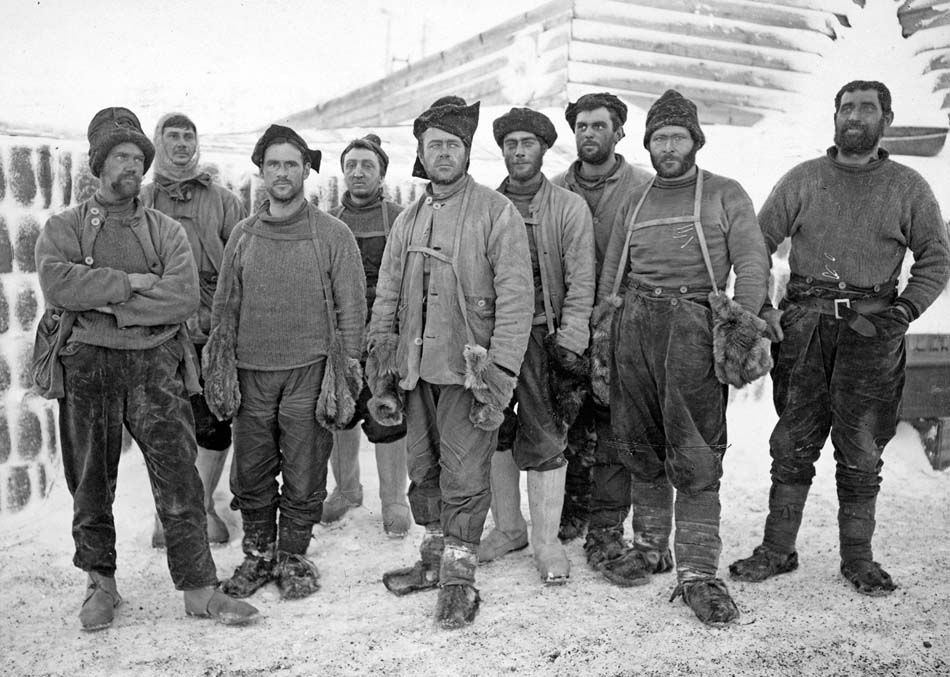
Captain
Scott and the depot laying party
the summer
and autumn of 1911 was spent laying
depots, marked stores
of food and fuel left on the ice
to be used on the 800-mile
journey to and
from the pole. l to r: Taylor, Wright,
Evans, Bowers,
Scott, Debenham, Gran, Evans and Crean.
The purpose of this depot laying was to leave caches of food and fuel on the Barrier (Great Ice Barrier, now called the Ross Ice Shelf) as far as 80 degrees south by a combination of ponies and dogs pulling sledges and manhauling.
The first depot was known as "Safety Camp" and the last and largest "One Ton Depot". The ponies fared badly from the outset partly as they didn't use snow-shoes and cold temperatures and blizzards slowed progress. The depots were all laid with three of the ponies dying en route or on the way back and another three being lost when crossing sea-ice which broke up near Hut Point.
Oates had wanted to press on, killing the ponies as they weakened and then depoting the meat for later use by men or dogs, but Scott wanted to save them, sending them back when they weakened. One result of this was that One Ton Depot was placed 30 miles short of its intended position at 80° 29'S, this would be particularly pertinent later on when Scott, Bowers and Wilson made their final camp 11 miles short of One Ton, starving and without fuel.
The Winter Journey to Cape Cozier
27th June 1911 -
1st Aug 1911
5 weeks
Henry Bowers
Apsley Cherry-Garrard
Edward Wilson
To recover emperor penguins eggs, it was thought that the embryo represented a kind of evolutionary "missing link".
This was the first time any winter journey had taken place in Antarctica.
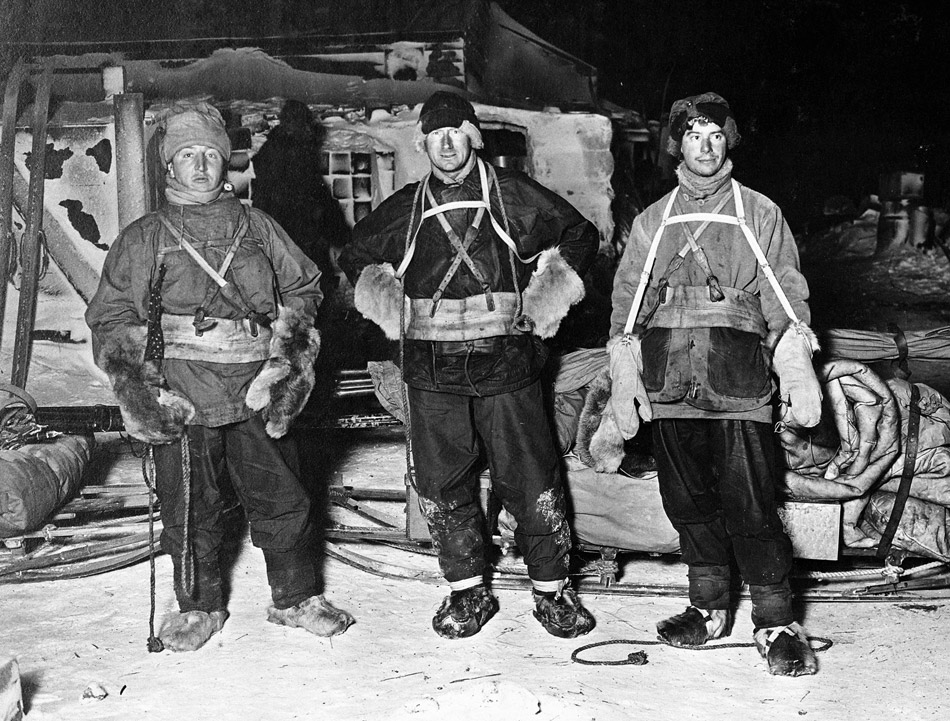
The
Cape Crozier party - l to r: Henry Bowers
Edward
Wilson, Apsley Cherry-Garrard, June 27th 1911.

On
Their Return
Just before midnight on August
1st 1911.
A journey that took place in the depths of the Antarctic winter darkness, cold and gales at an average temperature of around -50C and a low of -60C, the three men suffered numerous frostbites and the cold cracked Cherry-Garrard's teeth. They man hauled two sledges to Cape Crozier 65 miles (120 km) from the expedition base hut at Cape Evans.
Five eggs were collected from the emperor penguin colony, the first time anyone had seen these birds breeding, but two were broken on the way back to a stone "igloo" they had built as a shelter. Their tent blew away in a blizzard that a day later also took the canvas roof of the igloo and the three men lay in their sleeping bags, otherwise uncovered under drifting snow without food for two days until the gale died down and the tent could be recovered. After this Bowers tied himself to the tent when camping so it couldn't blow away again.
They arrived back at Cape Evans 5 weeks after leaving and had to be cut out of their clothes. Cherry-Garrard was the only one of the three to return home again, Bowers and Wilson would die on the way back from the pole with Scott in less than a year.
"Antarctic exploration is
seldom as bad as you imagine, seldom as bad as it sounds. But
this journey had beggared our language: no words could express
its horror."
Apsley Cherry-Garrard
It was one of the most astonishing and extreme journeys undertaken during the Heroic Age of Antarctic exploration. Cherry-Garrard wrote of their experiences in The Worst Journey in the World, published in 1922, and considered to be a classic of travel writing and by many to be the best travel book ever written.
The South Pole Party
1st Nov 1911 -
29th March 1912
Pole reached
on 17th Jan
Hut point to Pole in 75 days - 11 weeks
Hut Point to last camp 147 days - 21 weeks
Approximately on schedule
Edward Atkinson
Henry Bowers
Apsley Cherry-Garrard
Tom Crean
Edgar
Evans
Lieut. Edward Evans
Dmitriy Girev
Patrick Keohane
William Lashly
Cecil Meares
Lawrence Oates
Captain Scott
Edward Wilson
Charles
Wright
Final five in bold
Scott said that the main objective of the British Antarctic Expedition was "...to reach the South Pole, and to secure for the British Empire the honour of this achievement".
The timings and arrangements of the attempt on the pole fitted in with the other journeys and the extensive scientific programme.
Amundsen unilaterally declared a "race" to the pole, he had no scientific programme and no other reason to be in the Antarctic. Scott was troubled that he may be beaten there and was by 5 weeks, while he reached the pole successfully, all 5 men died on the return journey.
The British Antarctic Expedition of 1910-13 is best known for Scott successfully reaching the South Pole, though coming second to the team led by Roald Amundsen after Amundsen had decided to go south instead of north and make a race of it. Scott had been to Antarctica previously and was the first explorer to journey into the interior of Antarctica in the first "opening up" of the continent to exploration. He had decided on his timings according to his resources and what he knew of the weather at the time of year the attempt was to take place. When he found out about Amundsen, he was very concerned though decided to stick to his original timetable otherwise it would also have thrown out the schedule of other journeys and scientific programmes.
There were three groups that left for the pole from the 24th of October to the 4th of November 1911, one was a party with motor sledges, one with dogs and one with ponies. The motor sledges broke down fairly soon and those groups carried on manhauling their loads. The ponies had difficulty with the surfaces, sinking in and didn't cope well with the cold, they were killed as the groups progressed and used to feed the men and dogs and were also added to depots as food for the return journeys. The dogs were sent back at the base of the Beardmore Glacier with their handlers. The other men were sent back in small groups until the final five were left for the walk to the pole, all groups were manhauling by now. The South Pole Party were in good spirits and good though declining health by the time they reached the pole, morale in particular and health deteriorated on the way back. Evans died at the base of the Beardmore Glacier a month after reaching the pole, Oates walked to his death in an act of self-sacrifice a month after that and a few days later the surviving three made what was to be their final camp. Ten days after this, unable to leave the tent due to a constant blizzard and with no food or fuel remaining these last three also died. They were 11 miles from food and fuel at their biggest depot.
Tom Crean's March
18th Feb 1912
Tom Crean
A lone walk across 35 miles of the Great Ice Barrier to save the life of Edward Evans.
Evans had been pulled on a sledge for two weeks and was close to death, this was his only chance.
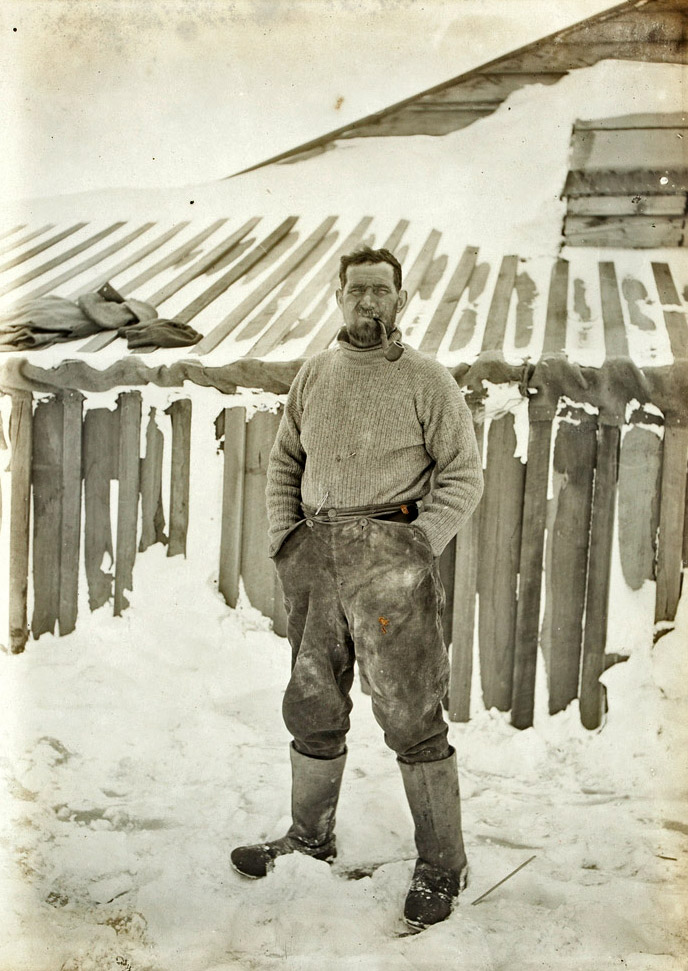 Tom Crean after
his return from
Tom Crean after
his return from
the Southern journey
Not a planned part of Scott's expedition, but worthy of inclusion here. Edward Evans, Tom Crean and William Lashly had all been hoping to join Scott in his final march to the South Pole, though had not been selected for the final party. They had been turned back half way to the pole from the the top of the Beardmore Glacier on the 4th of January 1912. By February they had all been manhauling for several months and many hundreds of miles, the journey back from the Pole alone was 700 miles (1,100km).
At the bottom of the Beardmore Glacier Evans began to show the signs of scurvy, his joints especially in his legs were painful and he was passing blood. By the 11th of Feb, Evans could no longer pull the sledge or even walk, he ordered Crean and Lashly to leave him behind, instead they put him on the sledge with over 100 miles still to go. By the 18th of Feb, they still had 35 miles left, a distance they reckoned would take another 4-5 days to reach and just 2 days food left, it wasn't certain that Evans would survive even if they managed to get him back to base in this time.
Crean and Lashly agreed that Crean should walk the last miles alone to fetch a rescue party. With three biscuits, a small amount of chocolate and just the clothes he stood up in, he set off. It took him 18 hours to reach the hut where almost on the point of collapse, he found Atkinson and Girev who were able to set off for Evans and Lashly with a dog team bringing them back alive. A blizzard hit just after Crean arrived at the hut, an event that would probably have killed him had he been caught out in it during his march. As it was, the blizzard delayed Atkinson and Girev's departure by a day and a half. Evans was brought back, he was at the edge of death and was invalided back to England when the Terra Nova sailed north for the winter, he recovered fully and was back with the Terra Nova at the end of the year for the final summer. Crean and Lashly were awarded the Albert Medal for their efforts in saving Evans.
The Search Party
29th Oct 1912 -
26th Nov 1912
4 weeks
Edward Atkinson
Apsley Cherry-Garrard
Tom Crean
Dmitriy Girev
Tryggve Gran
Frederick Hooper
Patrick Keohane
William Lashly
Edward Nelson
Thomas Williamson
Charles Wright
In the spring of 1912, at the end of October, a search party set off to see if they could find the Polar Party or at least clues of what had happened to them, they didn't have great hopes as they could be almost anywhere on the route to the Pole.
In late March 1912, a final attempt had been made to meet Scott but was turned back due to the time of year and cold temperatures. A very sombre winter had followed where it was certain that the Polar Party had all died. The Northern Party were also missing, their fate unknown.
Scientific work continued through the winter of 1912 as the dark polar night and extreme weather meant that travel was far too dangerous to attempt and unlikely to get far anyway. There were two missing parties, Scott's South Pole and Campbell's Northern Party, there were differing opinions about which should be the priority, a group meeting in May in early winter led to the decision to search for signs of Scott.
They thought the most likely scenario was that the pole party had fallen down a crevasse on the Beardmore Glacier, though they could be anywhere between Hut Point and the Pole and that the chances of finding them were very slim. The main hope was to find a note at a depot, something Scott was very strict about, so the main aim of the search party was to find a record of their success or failure for the benefit of their relatives and the expedition as a whole. They were prepared to go as far as the Upper Glacier Depot at the top of the Beardmore Glacier, beyond that they could not track the route that Scott had taken.
A team of Indian mules that had been landed by the Terra Nova the previous summer and two dog teams set off on the 29th of October. On the 12th of November the final camp was found containing the bodies of Scott, Bowers and Wilson. Diaries and records were retrieved along with some personal effects and then the poles removed from the tent allowing the canvas to collapse onto the bodies. A large snow cairn was built above the tent topped with a cross made from Gran's skis, a wooden sled and pole were part buried nearby sticking out of the snow. Gran then took Scott's skis and wore them on the way back so that at least the skis made the full journey to the pole and back, the skis are now in the Polar Museum at the Scott Polar research Institute (SPRI), Cambridge, England.
Now aware of the fate that had befallen the Polar Party, a fruitless search was made for Oates's body. His sleeping bag was found however on Nov 15th, and a cairn built near to the spot where he met his end, the sleeping bag is also in the Polar Museum at SPRI.
On return to Hut Point, the search party found that the Northern Party had walked back, all safe and sound three weeks earlier.
Some of the Crew of the Terra Nova Expedition
Abbot, George Percy - 12N -
Petty Officer, R.N.
Atkinson,
Edward L. - 12DPS - R.N. - surgeon, parasitologist
Balson,
Albert - 12 - Leading seaman, R.N.
Bowers, Henry Robertson - 1DCPo
- Lieutenant
Browning, Frank Vernon - 12N
- Petty Officer
Campbell, Victor - 12N - Lieutenant,
R.N.
Cheetham, Alfred B. - Boatswain
(Bosun), R.N.R.
Cherry-Garrard, Apsley - 12DCS
- Assistant zoologist
Crean,
Tom - 12DPS - petty officer, R.N.
Debenham,
Frank - 12iWiiW - Geologist
Dickason,
Harry - 12N - Able Seaman
Evans,
Edgar - 1iWPo
- petty officer, R.N.
Evans, Edward R.G.R. - 1DP - Lieutenant,
R.N. "Teddy Evans" - second in command,
and Captain of the Terra Nova
Girev
(Geroff), Dmitriy - 12DPS - Dog driver
Gran, Tryggve - 12DiiWS - ski expert
Lashly,
William - 12PS - chief stoker, R.N.
Levick,
G. Murray - 12N - Surgeon, R.N.
McLeod,
Thomas F. - 12 - Able seaman
Meares,
Cecil H. - 1DP - in charge of dogs
Oates,
Lawrence - 1DPo
- Capt. 6th Iniskilling Dragoons
Ponting, Herbert G. - 1 - Camera artist
Priestley,
Raymond E. - 12N - Geologist
Omelchenko,
Anton - 1 - Groom
Scott,
Robert Falcon - 1DPo
- Commander, R.N. -
Expedition leader
Simpson,
George - 1 - Meteorologist
Taylor,
T. Griffith - 1iWiiW - Geologist
Wilson,
Edward Adrian - 1DCPo
- chief of scientific staff and biologist
Wright,
Charles Seymour - 12iWPS - Physicist
Key:
1 - first winter
2 - second winter
iW - first western party
iiW - second western party
N - northern party
D - depot laying for south pole journey
P
- south pole party
C - winter journey to Cape
Crozier
S - search party for south Pole party
Po - reached South Pole
Robert Falcon Scott Books and Video

The Coldest March: Scott's Fatal Antarctic Expedition
by Susan Solomon
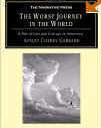
The Worst Journey in the World. Apsley Cherry-Garrard

The Voyage of the Discovery: Scott's First Antarctic Expedition
by Robert Falcon Scott, Ross MacPhee (Introduction), Fridtjof Nansen (Preface)

The Great White South: Travelling with Robert F. Scott's Doomed
South Pole Expedition by Herbert Ponting

Scott's Last Expedition: The Journals of Captain R.F.Scott

Edward Wilson's Antarctic Notebooks
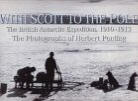
With Scott to the Pole
Herbert Ponting, illustrated

Discovery Illustrated: Pictures from Captain Scott's First Antarctic Expedition

Captain Scott by Sir Ranulph Fiennes

90 Degrees South: With Scott to the Antarctic (1933) DVD

History Chapters: Roald Amundsen and Robert Scott Race to the South Pole. Ages 4-8

Diary of the "Terra Nova" Expedition to the Antarctic, 1910-12

